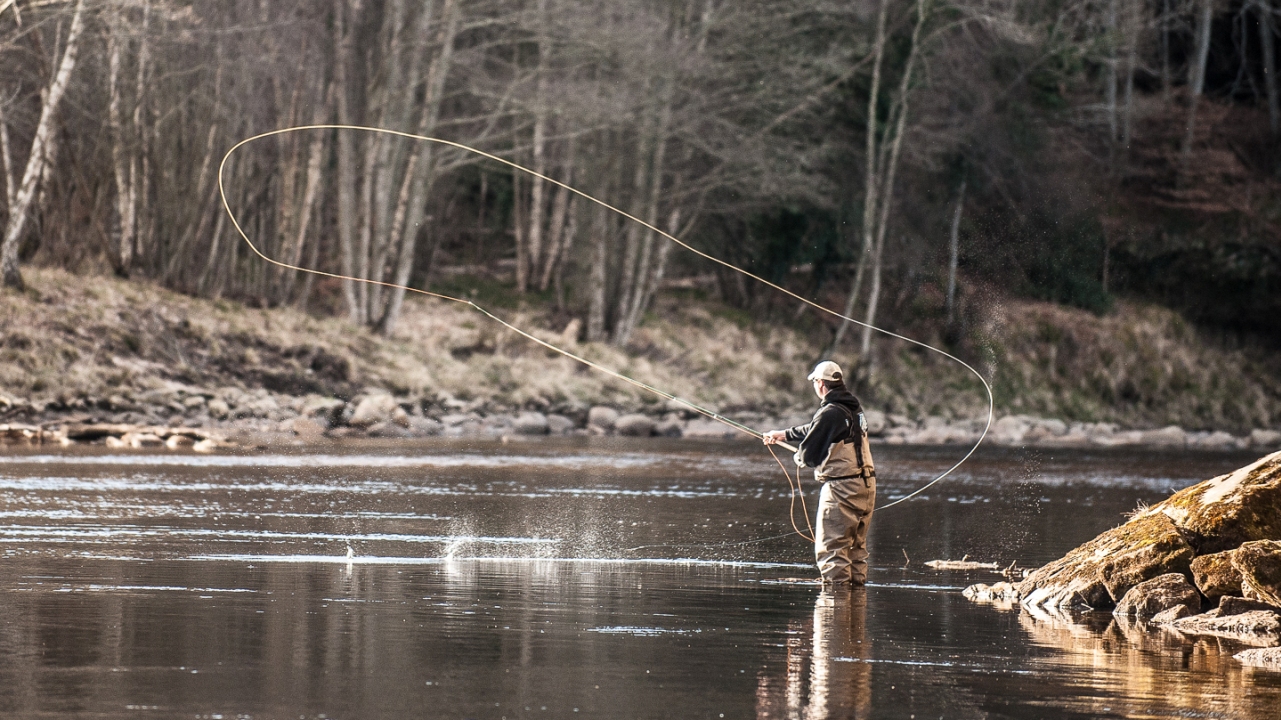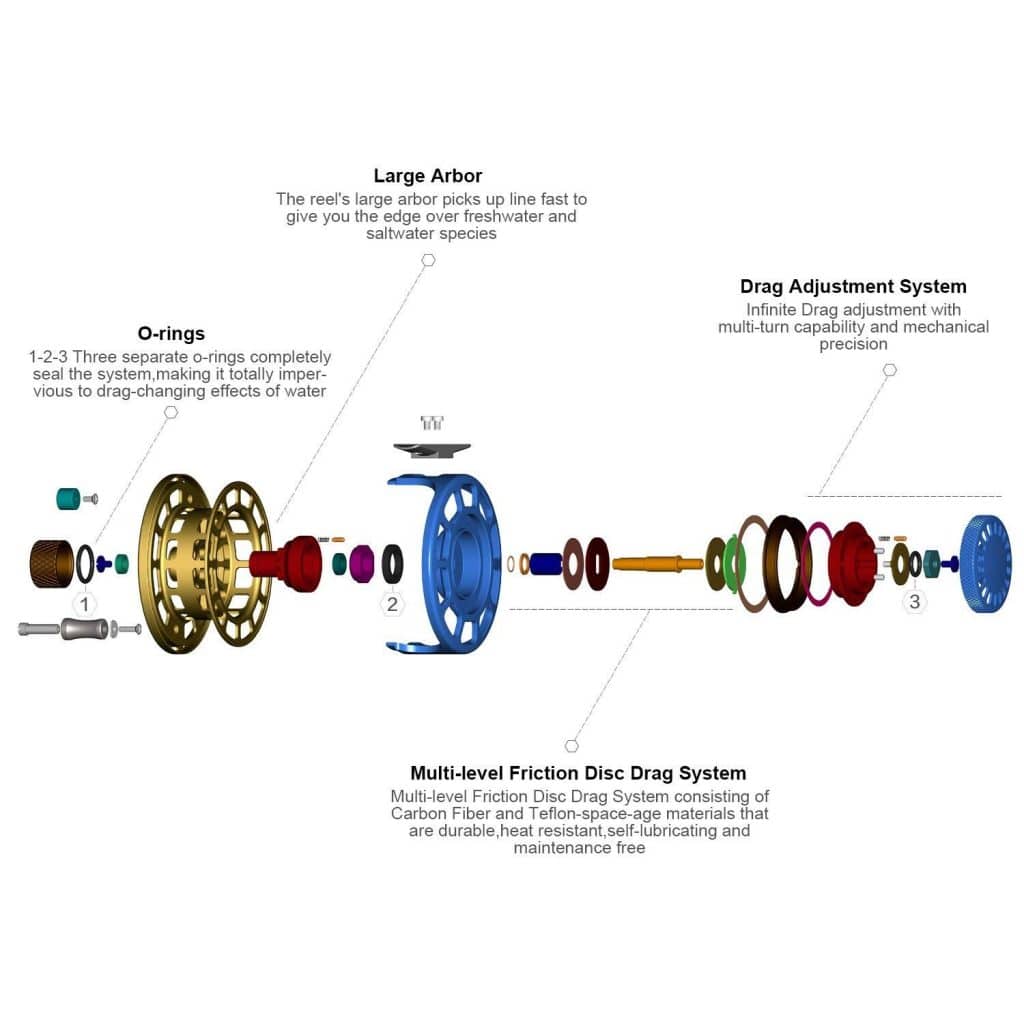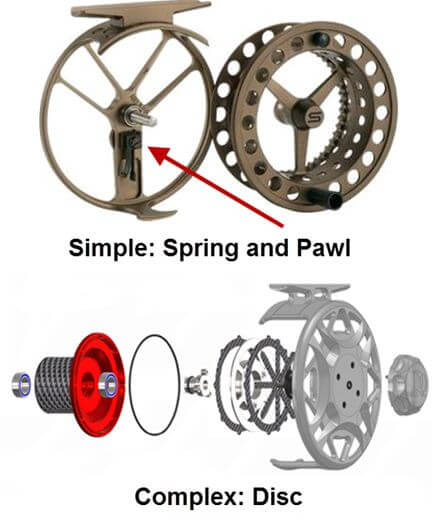The Fly Fishing Reel

(Credit: Ian Neale)

(Credit:flyfishingelite.com)

(Credit: Cabela's)
Wikipedia also said this about
drag on fishing reels “Drag systems are a mechanical means
of applying variable pressure to the line spool or drive
mechanism in order to act as a friction brake against it.
This supplies resistance to the line after hook-up to aid in
landing the fish without the line breaking. In combination
with rod flex and fishing technique, this allows larger fish
to be caught than the straight breaking strength of the line
would suggest. The mechanics of drag systems usually consist
of any number of discs (drag washers) arranged in a stack on
the spool shaft or in some cases, on the drive shaft. There
is generally a screw or lever mechanism that presses against
the washers—the higher the pressure, the greater the
resistance. Drag washers are commonly made of materials such
as steel, Teflon, carbon fiber, other reinforced plastics or
metal alloys. Since large fish can generate a lot of pulling
power, reels with higher available drag forces (which
generate greater heat) for higher-test lines will use
stronger and more heat-resistant materials than reels
designed for low-test lines. A good drag system is
consistent (generates the same force over and over), durable
and smooth (no jerkiness).” Most fly rods have a
generally lightweight backing for line that is easily broken
if pulled all the way out. So, it is not a good day if a fish
pulls your line all the way out of your reel.
| Back |
Home |
Next |